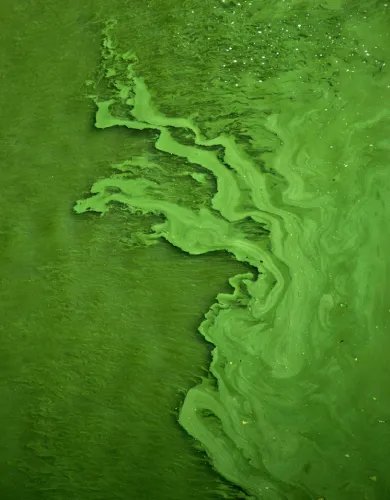What is Carbon Capture, Utilisation & Storage (CCUS)?
With the world’s nations scrambling to meet their net-zero by 2050 targets, Carbon Capture, Utilisation & Storage (CCUS) is becoming an increasingly attractive proposition.
This involves removing carbon from the atmosphere and either locking it away or putting it to good use so that greenhouse gas concentrations do not exceed the thresholds set out by the Paris Climate Change Agreement.
As good as it may sound, Carbon Capture technology comes in a few different forms, all of which have yet to be deployed at scale. However, big leaps in scalability may just be around the corner.
In this article, we explain what Carbon Capture, Utilisation & Storage (CCUS) is and the challenges that implementing this technology still faces.
What is Carbon Capture?
Carbon capture on its own refers to the process of removing or preventing carbon dioxide from entering the atmosphere.
When combined with utilisation and storage/sequestration of this carbon (CCUS), this process aims to prevent catastrophic climate change by making sure carbon remains in a state where it does not impact the greenhouse effect.
The captured and stored carbon dioxide can either be permanently locked deep underground in soils or utilised in useful applications like thermal energy storage, replacing water in cement curing and making biodegradable plastics.
Isn’t carbon capture just another name for photosynthesis?
Many natural processes like rock weathering, photosynthesis in tree leaves, algae and certain bacteria are constantly transforming CO2 into solid forms of organic matter (i.e. all living things are made of carbon!)
However, the term “Carbon Capture” normally refers to any human effort to remove manmade concentrations of carbon dioxide from the atmosphere while ignoring any pre-existing processes which are part of the natural carbon cycle.
How does Carbon Capture, Utilisation & Storage (CCUS) work?
There are a plethora of CCUS methods that work in very distinct ways, all having these distinct stages:
- Capture: The process of removing carbon dioxide or preventing its emission into the atmosphere. e.g. Photosynthesis, solvent filters, DAC filters.
- Transport: Moving the captured carbon to its storage/sequestration/utilisation location. e.g. Taking pressurised CO2 via a pipeline, moving truckloads of basalt dust to a field.
- Storage/Sequestration: Sequestering carbon for centuries deep underground or storing it in tanks for later use.
- Utilisation: Examples include producing high-value chemicals, accelerating plant growth, and spreading biochar in infertile soils.
What are the different methods of Carbon Capture?
These are a few of the most popular nature-based and man-made carbon capture solutions:
- Capture at sources (Heavy Industry)
- Direct-Air Capturing
- Rock Weathering
- Pyrolysis (PyCCS)
- Microorganisms
Capturing carbon emissions from heavy industry
The easiest way of capturing carbon from heavy industries (e.g. fossil fuel plants, cement plants and oil refineries) is by doing so directly from its concentrated source of emissions, i.e. at the burner, chimney or stack.
The released gas from heavy industry is called flue gas, and there are multiple ways in which a portion (typically ~20%) of CO2 can be captured. Examples include installing solvent filters or metal-organic frameworks.
The issue is that these tend to be expensive, energy-consuming and have many regulatory barriers to overcome. Typically, two-thirds of the cost of the entire sequence of capturing, storing and utilising is incurred at this stage.
Drax Power Station in the UK plans to capture a proportion of its flue gas emissions through absorption and then sequester it in deep underground storage accessible through existing pipelines connected to offshore oils and gas wells.
Direct-Air Capturing (DAC)
Involves capturing CO2 directly from the ambient air, in the same way as trees and algae do. Technically, rock weathering also falls into this category.
Currently, there are hundreds of alternative solutions in development, and many start-ups and research centres are testing them out.
This includes Bill Gates’ Carbon Engineering design, which is currently removing carbon from the atmosphere and turning it into synthetic fuels.
The general problem with Direct-Air Capture is that it uses a significant amount of energy. For net carbon-negative carbon capture, it is necessary to avoid using electricity from a national grid but instead connect the project with renewable electricity generation like a commercial solar or wind farm.
However, electricity generated from renewables is expensive. Current business electricity prices make current direct-air capture technology prohibitively expensive.
Carbon capture through rock weathering
Now, this one is interesting. Common rocks like basalt naturally capture carbon dioxide from the atmosphere during weathering (i.e. the process of naturally breaking down over time).
The solid carbon produced dissolves in rainwater and leaches into soils or sediments, where it may remain sequestered for a long time.
Scottish company Un-do is spearheading this approach by using the fine dust discarded from basalt aggregate quarrying (Aggregates: small rocks used in roads, track ballasts, etc.) and sprinkling it into agricultural fields.
The fine-grained rock can naturally capture carbon by being exposed to the atmosphere without requiring any extra energy. This is free carbon capture using discarded material.
However, it’s still early, and this method is still being trialled with some concerns, such as heavy metal contamination and carbon stability being closely monitored.
Pyrolysis Carbon Capture and Storage (PyCCS)
Pyrolysis Carbon Capture and Storage (PyCCS) is an alternative way of producing energy from biomass by burning it at high temperatures with little to no oxygen to produce oil, syngas and biochar, with the latter being a stable form of carbon with soil-improving properties.
However, the concept of using Pyrolysis at scale is only a decade or so old, so it is still in the process of being developed.
Using microorganisms to capture carbon
Some of these organisms have the natural ability to capture carbon dioxide and are being used to sequester carbon as part of wastewater treatment. In a process called MECC, bacteria are used to precipitate carbon-containing Calcite while producing hydrogen, a useful clean fuel.
How is carbon stored/sequestered in CCS/CCSU?
Geological Sequestration
This involves injecting captured CO2 into depleted oil and gas fields, deep saline formations or unmineable coal seams, where it can precipitate and form part of the rock matrix, sealing it indefinitely.
The main issue is that carbon dioxide can no longer be utilised, and there exists the risk of leakage during pipeline transportation.
Algae, Plants and by-products
CO2 can be sequestered and re-utilised by feeding it to photosynthesising organisms like plants and algae in sealed environments like water tanks or greenhouses.
Depending on location and market demand, different plants and algae can be grown. Greenhouses with edible fruits like strawberries or fibrous plants like hemp or water tanks filled with edible algae or varieties with degradable plastic properties.
Biochar
This is the stable by-product of Pyrolysis that can remain in its solid form for thousands of years. Its tropical soil-enhancing properties mean that the ancient peoples of the Amazon rainforest used it extensively to fertilise their edible gardens.
As a soil amendment, biochar’s porosity makes Biochar water-retaining and suitable habitat for healthy microorganisms, while its alkalinity can balance the pH of acidic soils typical of the tropics.
Storage in tanks for other uses: CO2 temporarily stored in tanks can be used to carbonate beverages, grow greenhouse plants faster, create polymers, store thermal energy, replace the water in cement curing, etc. One of the drawbacks is the risk of leakage back into the atmosphere.
Is Carbon Capture and Storage expensive?
Yes, most carbon capture solutions are expensive, especially at the capturing stage. In fact, the main issue with any CCS solution is that none of them is currently scalable and, therefore, tend to be uneconomic in their current form.
Below is a table with some estimated costs gathered from IEA (source: here and here):
| Type | $USD per tCO2 captured | Source |
|---|---|---|
| Point-Source Carbon Capture | 50-100 | IEA |
| Direct-Air Capture | 130-340 | IEA |
| Rock Weathering | 50-480 | Undecided with Matt Ferrell |
What is the best carbon capture solution?
The main takeaway here is that there is no “silver bullet” when it comes to CCUS, and it is impossible to say which methods will predominate as it is a rapidly developing field.
The scale of innovation is exciting, and it is likely that an array of solutions will be able to tailor to individual circumstances.
For example, in a temperate area with existing basalt quarrying, CCUS through rock weathering may be more appealing than Pyrolisis.
Or, in large power stations like Drax, point-source capturing is the most effective solution and can leverage the existing pipeline infrastructure between the Humber region of Yorkshire and North Sea offshore rigs to sequester it geologically.
How can carbon capture help reduce my energy bills?
Reducing carbon emissions is one way to mitigate climate change, which is indirectly raising energy bills by creating wild, unexpected weather conditions.
Colder winters, hotter summers, stronger storms, flash floods, and droughts that affect energy demand, generation and infrastructure are becoming more common.
At AquaSwitch, we help you reduce your energy bills by letting you compare and switch your business energy supplier with ease.
Depending on your priorities and your property’s location, you may choose the cheapest tariff or perhaps a renewable business energy tariff.
FAQs
Here, we try to answer some of the internet’s frequently asked questions regarding carbon capture (and storage and utilisation).
Can carbon capture save us?
Yes, but not on its own. The current climate crisis requires global coordination in reducing carbon emissions, preserving biodiversity, becoming resilient to natural hazards, etc. Carbon capture is only one piece of the puzzle!
Does carbon capture technology exist?
Yes. In fact, if you consider nature as ‘technology’, carbon capture on Earth started 3.5 billion years ago with the first photosynthesizing organisms converting the CO2 in the atmosphere into oxygen.
If you mean man-made applications, technology is as recent as the word ‘Climate Change’, which dates to the 1990s. It is still in its infancy, but yes, it exists!
Is carbon capture mitigation or adaptation?
Carbon capture is a climate change mitigation strategy, as it aims to reduce the effects of catastrophic global warming.
Contrary to this, adaptation measures are those that deal with the effects of climate change, like building sea walls to adapt to rising sea levels.
Is carbon capture realistic?
Yes, carbon capture technology is being developed and is considered by organisations like the International Energy Agency as an important component in the reduction of greenhouse gases from the atmosphere.
What are the best trees for carbon capture?
This question has no reasonable answer, as a single tree acts together with an entire ecosystem to sequester carbon.
The view that nature works in individual components is a common misconception when in fact, what matters is how the tree is interacting with its surrounding environment.
For example, a tree in an old-growth forest is very resilient to shocks like disease and can absorb and sequester carbon for centuries within the forest system. Carbon remains within the tree mass as long as the tree stands, allowing for large colonies of micro-organisms to co-exist, as well as other types of life (all made of sequestered carbon!).
In comparison, a large desolate tree may have a lot of sunlight but is perhaps more vulnerable to disease, and any of its dead organic matter may land on a paved surface, which may end up in a landfill, producing methane gas.
Is carbon capture expensive?
Yes, this is one of the main drawbacks of existing carbon capture technologies, as you can see in our comparison table.

